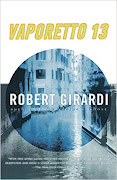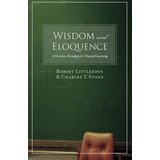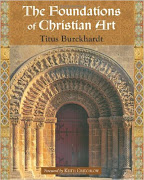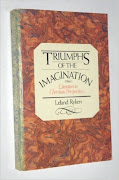I recently made a presentation of the Art Cart at Aurora Baycare Medical Center in Green Bay. On the Art Cart we offer tools of the arts to patients free of charge, as well as crafts and a few entertainment items like puzzle books. The cart was put together by three of us who wanted to offer patients the benefits that each of us enjoys by the arts we practice, and the hospital administration was fully supportive with funding. We know that the arts can be therapeutic and hope to utilize creativity to improve the patient’s care.
With the unveiling of the cart I spoke on several ways the arts may help a patient. The arts we are able to offer relate to writing, drawing, and painting. We are not able to offer art therapy, as such, as this requires the professional art therapist and ongoing treatment. In the hospital setting we realize it may be difficult to offer any sort of art class to the patient as few stay for more than two days. We are only able to offer them an opportunity to experience the benefits of art.
Of the several ways art may help the patient, the first, and obvious, is to provide a diversion. If the patient is preoccupied with their condition it may worsen. We provide light entertainments such as crosswords and word finds, which are the most popular items, as well as trivia books, paint-by-numbers, and joke books. We like to provide some thought-engaging entertainment.
Art may preoccupy the mind of the patient to the extent that they overlook their current condition, or, at least, make them less aware of time spent in the current condition. When drawing I find it easy to spend three hours on a piece, without watching the clock, only afterward realizing it.
The arts offered, of course, may be used to express the condition, rather than overlook it. Creatively expressing the condition may give the patient some distance from the event, perhaps even lead to some objectivity. Emotions are expressed, and so the act of creativity is personal. In that sense it is subjective. But turning emotion into something concrete – shapes, colors, words – is a sort of translation into terms others may understand. Art turns emotion into symbolism. Such a translation may lead to observing the condition from multiple perspectives. When I wanted to write, in poetry, about a life-changing event – the fracture of my ankle – I thought in terms of imagery. To convey the kind of pain caused by the injury, and the life-long disability resulting from it, I wrote about the specific incidents it affected, like how walking on a wood chip trail became so difficult. It was deeply personal, and, in a sense, the act of creativity could be painful in recalling the events and realizing the significance of the loss. In my effort to convey the significance in imagery, I had to realize it. Still, it had some healing effect.
That sort of epiphany that every artist hopes for is how art may serve the patient in the most significant way. That is how art is therapeutic. I do not know what I will write until I start to write. When I went through health problems I spoke to people, whether in a social or a hospital setting, usually in clinical terms. I wrote in personal terms. Sometimes the art was so personal I did not share it with anyone else. I did not want to show my anger. But the act of creativity helped me to put my thoughts and feelings into order, and afterward I could share some of them without being too personal. The act of creativity helped me to make order out of chaos, as Robert Frost said was his reason for writing poetry.
There is a final way that creativity can help the patient, and that is the product itself. (I hate to use such a laborious word – product – but the alternatives are work of art or art piece, which are just as bad.) When I created some thing out of my experience, even if it was an expression of anger or despair, I had made that which could not exist by any other means. As I am unique for the total of my experiences, so was this art. Take away my experience of pain and I would not be the same. I don’t know if I would be a better man for it or not, but I find some fulfillment in who I am now. And so I find some fulfillment in what I’ve created.
ZEDS Blog
I enjoy the essays of Dafoe, Addison, and Samuel
Johnson, all of which were published in pamphlets. Pamphlets were in vogue from 1650-1800, providing writers a forum to express views on politics, society, religion, and art. This has been revived in modern times in the form of blogs.
This is now a slight revamp of my blog that started in 2008.
My reading has become a little more specialized, although previous books commented on show I was heading this direction. At this point I will review mainly Christian texts or other texts from a Christian perspective. I intend to post more regularly with book reviews.
I consider reading and writing as part of the spiritual
journey toward maturity and, I hope, wisdom. These are postings of what I’m learning along the way.
Rod Zinkel, August 19, 2015
Sunday, December 14, 2008
Monday, December 1, 2008
No Pity for Myself
“A tragedy is the imitation of an action which not by means of narration, but by means of pity and fear, serves to effect the purification of these and similar persons.”
Aristotle, Poetics.
The main theme of Lessing’s essay, “Aristotle and Tragedy,” is defining what Aristotle meant by the statement above, how tragedy (meaning drama, not a tragic event) should evoke pity and fear and would purify the passions, or as I would categorize them – emotions. Lessing discusses the popular translation that the depiction of a character enduring tragic events, even if he is villainous, creates in the viewer pity for the character. This feeling is intertwined with fear, as the viewer is afraid they may face the same fate some day. Both require certain sympathy for the character that I would say goes beyond just humanitarianism – sympathy because we are all human.
I agree with the statement, by the popular translation. For a fictional tragic story to work – in film, TV, or books – I will view it with pity and some fear. The closer I relate to the characters, the more powerful those feelings become. I think those feelings, based on identifying with characters, are what determine our favorite stories. We all have books, movies, and TV shows that we like more than they really deserve, stories that by the quality of their telling aren’t great, but they become personal favorites. The film The Greatest Story Ever Told isn’t the greatest movie ever made. My personal favorite, when it comes to tragedy, is the film Shadowlands. I realize by critique of filmmaking, I’d give it 3 ½ stars. But personally, no other film has affected me so greatly, even affecting my beliefs and behavior.
The reason for my personal favorite becoming such an influence in my life is because I relate to the depiction of C. S. Lewis so well. It is based on a true story, which makes it more powerful, but it isn’t necessary for the film to still be effective. There are fictional elements to it. What’s most interesting is that, while it includes some of Lewis’s words, it is based on a stage play by William Nicholson, someone who observed Lewis’s words and his life to depict the author in such a way as he did not necessarily see of himself. From Lewis’s autobiography and his writings I think it a very good depiction. The film portrays a man who lives a scholar’s life at Oxford, surrounded by academic men, books, and boys who learn in awe from a well-known author. He is taken aback when a woman enters his life. He isn’t sure what to say, which astounds those who know him for only asking questions to which he already has the answers. When the relationship ends with her death he doesn’t know what to do. Those lessons he had taught to students, colleagues and the public at large are tested by the experience of suffering. Accepting the theory that stories, to become great in our own estimates, should have characters we identify, it should not surprise me that great stories become fewer as I get older. Movies and TV are definitely not written for people over forty, or who have developed mentally beyond eighteen. Beyond that, all the modern categories of stories – including books, magazines, TV, film, theater, even music to some extent – have little to offer me, or anyone who is an individual who knows themselves well. I no longer define myself by those entertainments, as I may have in youth, as is perpetuated by MySpace, Facebook, and a host of other sites that encourage you to categorize yourself by pop culture. I define my entertainment by who I am, not the other way around.
I am a single white male, age 41, never married, no children, Christian, English major who studies literature and tries to write it, lower middle income, lives in the Midwest, seldom drinks alcohol, doesn’t drive a pickup or 4X4, dislikes materialism but defends capitalism, works in an office with 37 women and 1 other man, a kidney recipient, and disabled. That’s a quick summary of most of the important aspects of myself. With this forming my point-of-view, there’s not a lot of entertainment I view as great. That’s not to say there isn’t good entertainment, or well-made entertainment, but that is to say it won’t greatly affect me. It shouldn’t. It is one of my conflicts that while I try to build a career in entertainment, I also downplay its importance.
P.S. Seeing that there is little in the world, as portrayed in the media, that I relate to can make me feel I’m the only one. Continuing to attempt publishing, and finding some success, getting some responses, makes me realize I’m not the only one. Therefore, there is an audience for such work, who doesn’t find much of it. There is potential, not for popularity, but for success.
Aristotle, Poetics.
The main theme of Lessing’s essay, “Aristotle and Tragedy,” is defining what Aristotle meant by the statement above, how tragedy (meaning drama, not a tragic event) should evoke pity and fear and would purify the passions, or as I would categorize them – emotions. Lessing discusses the popular translation that the depiction of a character enduring tragic events, even if he is villainous, creates in the viewer pity for the character. This feeling is intertwined with fear, as the viewer is afraid they may face the same fate some day. Both require certain sympathy for the character that I would say goes beyond just humanitarianism – sympathy because we are all human.
I agree with the statement, by the popular translation. For a fictional tragic story to work – in film, TV, or books – I will view it with pity and some fear. The closer I relate to the characters, the more powerful those feelings become. I think those feelings, based on identifying with characters, are what determine our favorite stories. We all have books, movies, and TV shows that we like more than they really deserve, stories that by the quality of their telling aren’t great, but they become personal favorites. The film The Greatest Story Ever Told isn’t the greatest movie ever made. My personal favorite, when it comes to tragedy, is the film Shadowlands. I realize by critique of filmmaking, I’d give it 3 ½ stars. But personally, no other film has affected me so greatly, even affecting my beliefs and behavior.
The reason for my personal favorite becoming such an influence in my life is because I relate to the depiction of C. S. Lewis so well. It is based on a true story, which makes it more powerful, but it isn’t necessary for the film to still be effective. There are fictional elements to it. What’s most interesting is that, while it includes some of Lewis’s words, it is based on a stage play by William Nicholson, someone who observed Lewis’s words and his life to depict the author in such a way as he did not necessarily see of himself. From Lewis’s autobiography and his writings I think it a very good depiction. The film portrays a man who lives a scholar’s life at Oxford, surrounded by academic men, books, and boys who learn in awe from a well-known author. He is taken aback when a woman enters his life. He isn’t sure what to say, which astounds those who know him for only asking questions to which he already has the answers. When the relationship ends with her death he doesn’t know what to do. Those lessons he had taught to students, colleagues and the public at large are tested by the experience of suffering. Accepting the theory that stories, to become great in our own estimates, should have characters we identify, it should not surprise me that great stories become fewer as I get older. Movies and TV are definitely not written for people over forty, or who have developed mentally beyond eighteen. Beyond that, all the modern categories of stories – including books, magazines, TV, film, theater, even music to some extent – have little to offer me, or anyone who is an individual who knows themselves well. I no longer define myself by those entertainments, as I may have in youth, as is perpetuated by MySpace, Facebook, and a host of other sites that encourage you to categorize yourself by pop culture. I define my entertainment by who I am, not the other way around.
I am a single white male, age 41, never married, no children, Christian, English major who studies literature and tries to write it, lower middle income, lives in the Midwest, seldom drinks alcohol, doesn’t drive a pickup or 4X4, dislikes materialism but defends capitalism, works in an office with 37 women and 1 other man, a kidney recipient, and disabled. That’s a quick summary of most of the important aspects of myself. With this forming my point-of-view, there’s not a lot of entertainment I view as great. That’s not to say there isn’t good entertainment, or well-made entertainment, but that is to say it won’t greatly affect me. It shouldn’t. It is one of my conflicts that while I try to build a career in entertainment, I also downplay its importance.
P.S. Seeing that there is little in the world, as portrayed in the media, that I relate to can make me feel I’m the only one. Continuing to attempt publishing, and finding some success, getting some responses, makes me realize I’m not the only one. Therefore, there is an audience for such work, who doesn’t find much of it. There is potential, not for popularity, but for success.
Labels:
Aristotle,
entertainment,
fiction,
Lessing,
tragedy
Subscribe to:
Posts (Atom)
Calendar
Chapbook: Two Natures
The Neville Museum series has published a chapbook of 15 of my poems. They are of human and spiritual natures. Here are two poems from the book:
Two Natures
On still water of the pond
two natures you may notice--
where scum has been gathering,
there also grows the lotus.
One Way
There's a boy
who stands knee-high
to a July cornstalk.
He stares one way
down the dirt road
his mother has gone.
He find Fortune
has desrted him,
like the poverty-stricken,
society-forbidden parent.
"I can't take care of you," she said.
I am the child who mirrors
his mother's tears without knowing why?
Two Natures
On still water of the pond
two natures you may notice--
where scum has been gathering,
there also grows the lotus.
One Way
There's a boy
who stands knee-high
to a July cornstalk.
He stares one way
down the dirt road
his mother has gone.
He find Fortune
has desrted him,
like the poverty-stricken,
society-forbidden parent.
"I can't take care of you," she said.
I am the child who mirrors
his mother's tears without knowing why?






